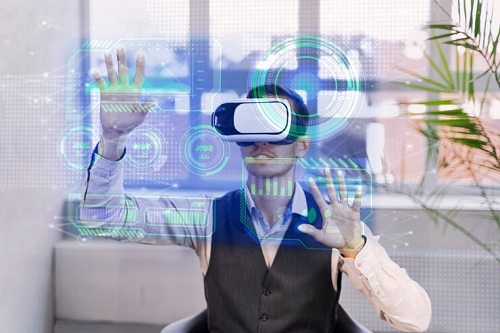In recent years, technology has evolved at an unprecedented pace, revolutionizing the way humans interact with machines. One of the most significant advancements in this realm is Extended Reality (XR), a term that encompasses Virtual Reality (VR), Augmented Reality (AR), and Mixed Reality (MR). XR has the potential to transform human-machine interaction, offering immersive and interactive experiences that were once only seen in science fiction.
Virtual Reality (VR) is a fully immersive experience that transports users to a computer-generated environment, while Augmented Reality (AR) overlays digital content onto the real world. Mixed Reality (MR) combines elements of both VR and AR, allowing digital and physical objects to interact in real time. These technologies have the power to bridge the gap between humans and machines, creating new opportunities for communication, collaboration, and productivity.

XR has a profound impact on various industries, including healthcare, education, entertainment, and manufacturing. In healthcare, VR simulations are used for medical training and therapy, providing a safe and controlled environment for practitioners and patients. In education, AR applications enhance learning by bringing textbooks to life and creating interactive experiences. In the entertainment industry, VR gaming offers immersive and captivating experiences for players. In manufacturing, MR technology is used for design visualization and remote assistance, improving efficiency and accuracy.
One of the key roles of XR in human-machine interaction is its ability to create a seamless and intuitive interface between humans and machines. Traditional user interfaces, such as keyboards and touchscreens, are being augmented or replaced by XR interfaces that enable users to interact with machines in a more natural and immersive manner. For example, VR and AR headsets can be used to manipulate virtual objects in 3D space, enhancing the way humans interact with digital content.
Moreover, XR has the potential to enhance communication and collaboration between humans and machines. With the ability to visualize and interact with digital information in a spatial context, XR technologies enable more effective data visualization, remote collaboration, and telepresence. For instance, MR headsets can overlay digital instructions onto physical objects, guiding users through complex tasks in real time. This not only improves productivity but also reduces the risk of errors in various industries.
Furthermore, XR is driving innovation in human-machine interaction by enabling new forms of human-computer interfaces. Gesture recognition, eye tracking, and voice commands are being integrated into XR devices, allowing users to interact with machines using natural and intuitive input methods. This not only enhances accessibility but also opens up new possibilities for controlling and manipulating digital content.
In conclusion, Extended Reality (XR) is revolutionizing human-machine interaction by offering immersive experiences, creating seamless interfaces, and driving innovation in various industries. As XR continues to evolve, it will play an increasingly integral role in shaping the future of technology and human-machine interaction. The potential for XR to transform the way we interact with machines is vast, and its impact on society is only beginning to be realized.
In this blog post, we explored the transformative potential of Extended Reality (XR) and its impact on human-machine interaction. We discussed how XR technologies such as Virtual Reality (VR), Augmented Reality (AR), and Mixed Reality (MR) are shaping the future of technology and revolutionizing various industries. From healthcare and education to entertainment and manufacturing, XR is driving innovation and creating new opportunities for communication, collaboration, and productivity. As XR continues to evolve, it will play an increasingly integral role in shaping the future of human-machine interaction.


